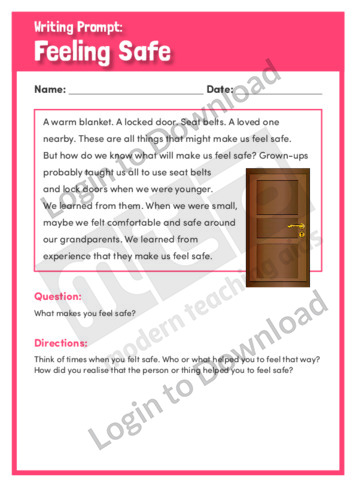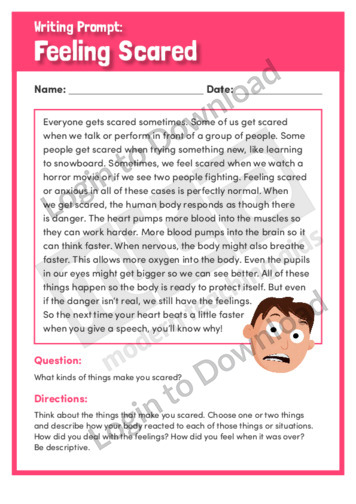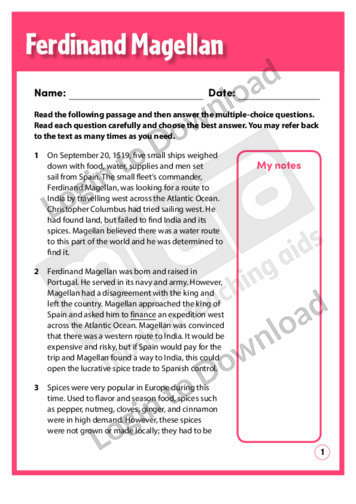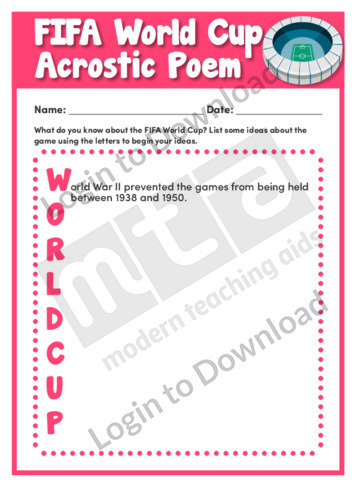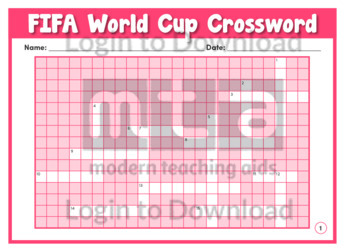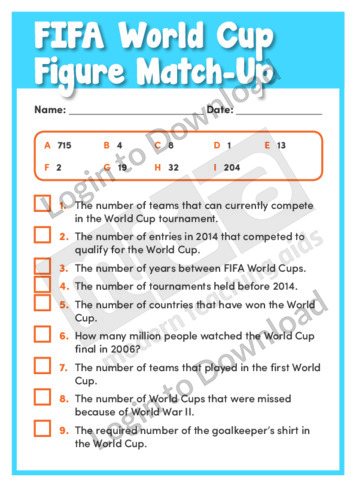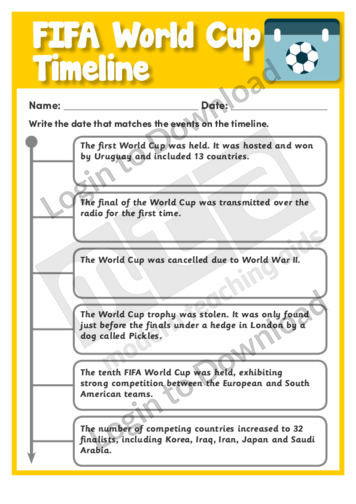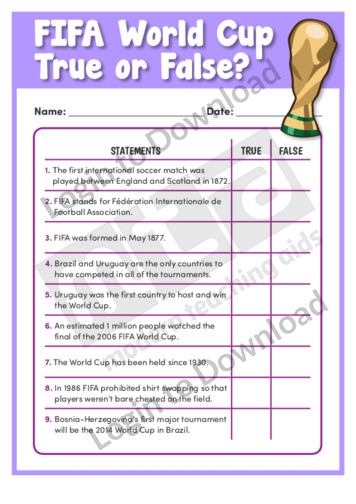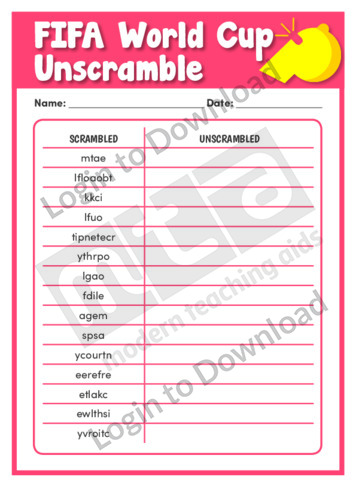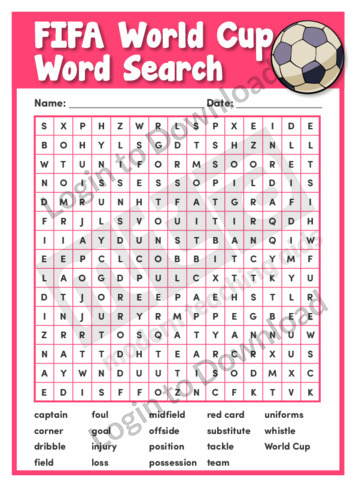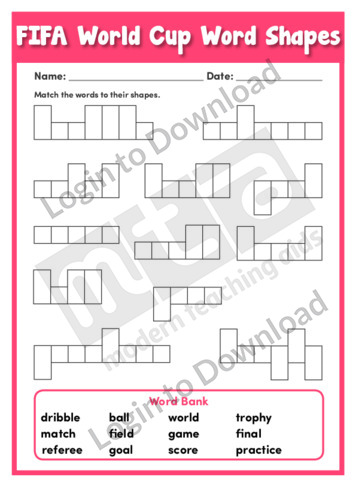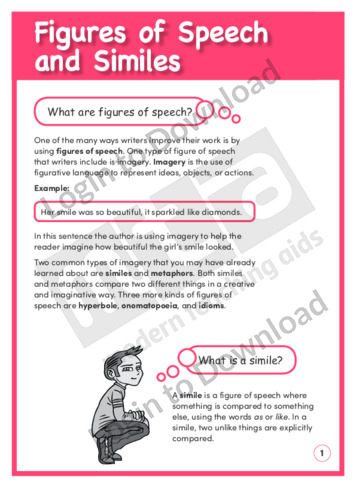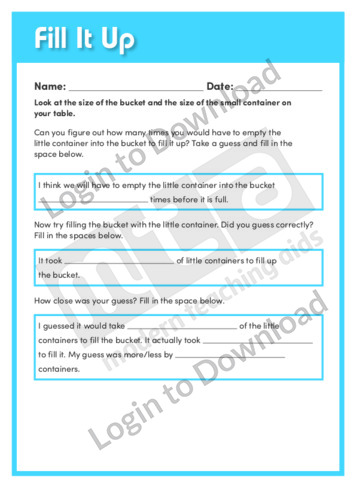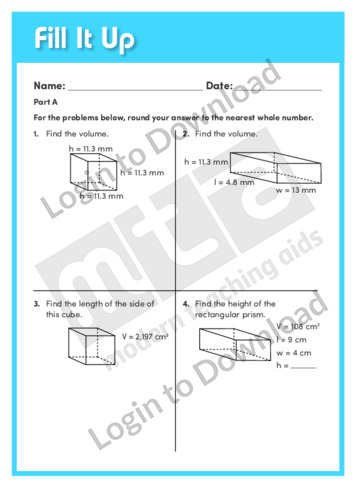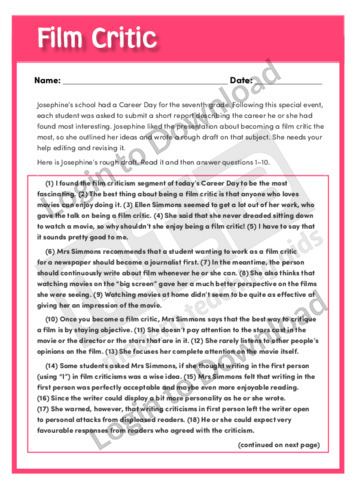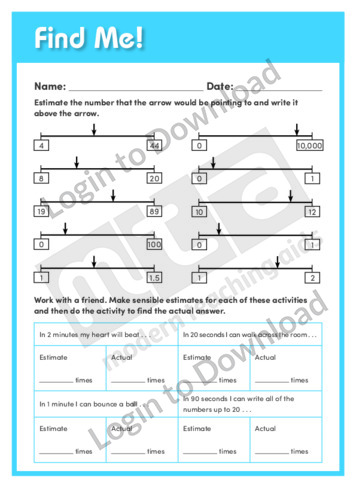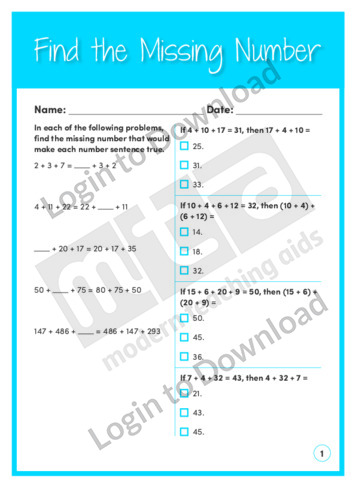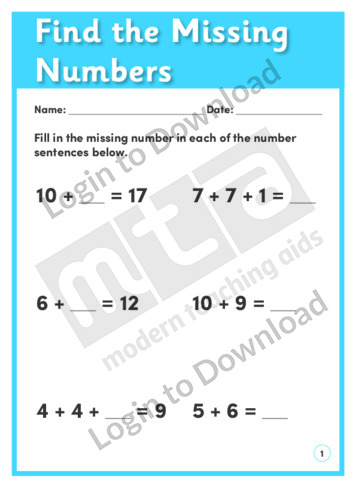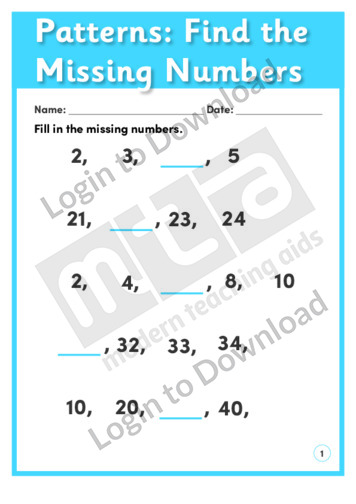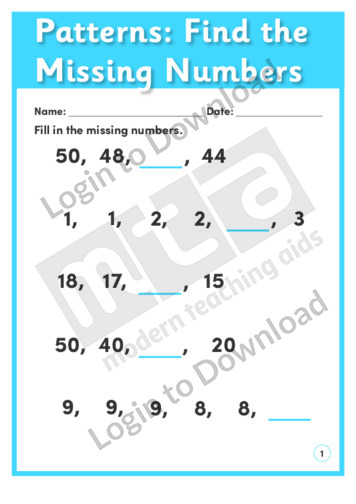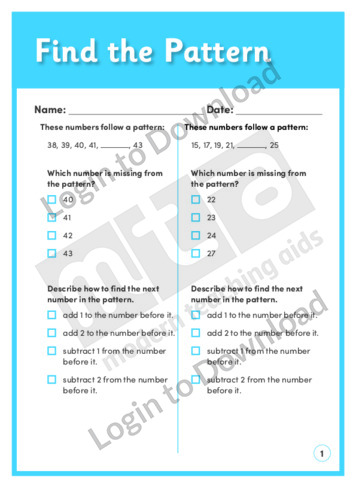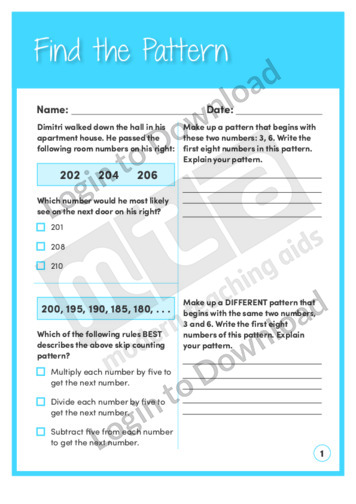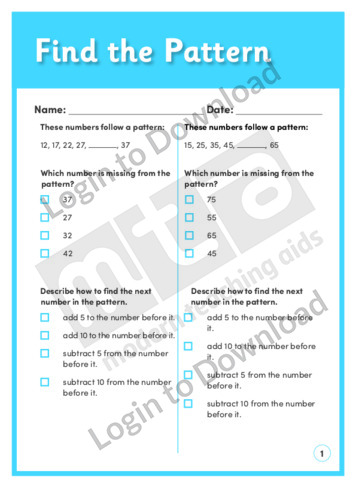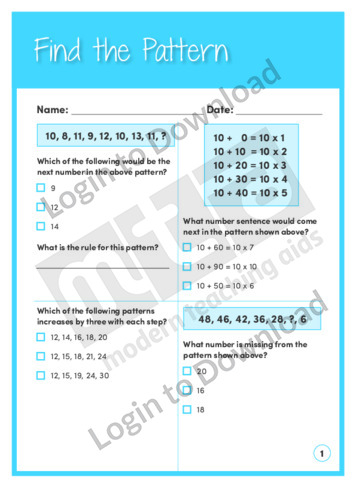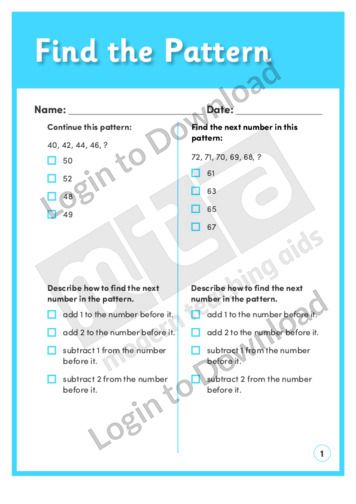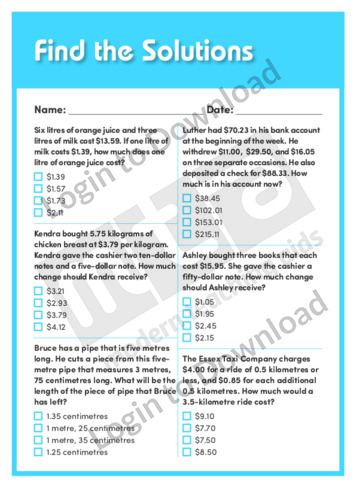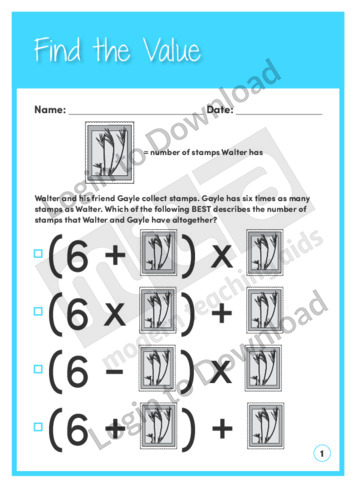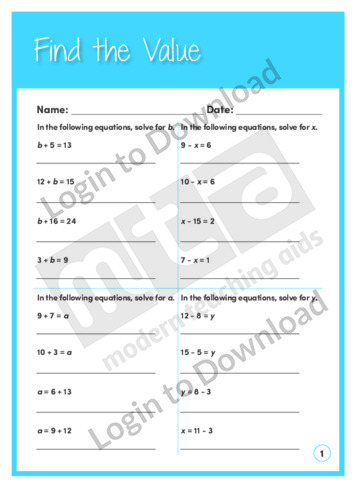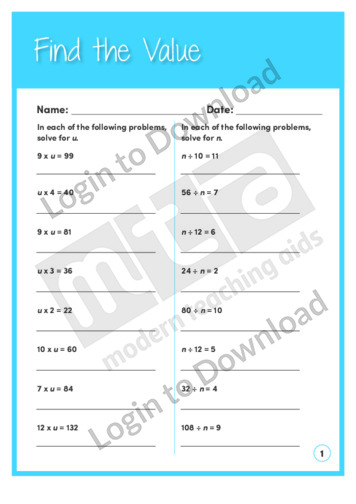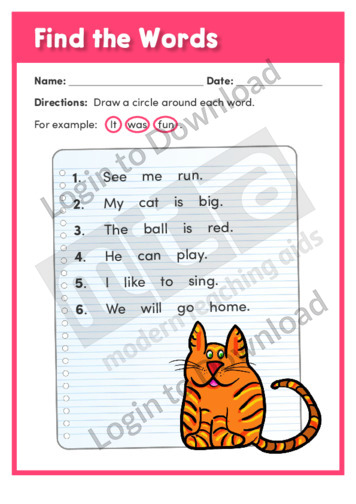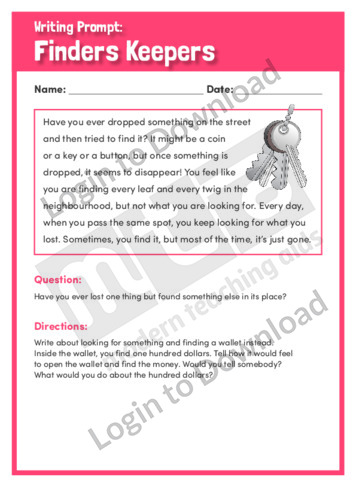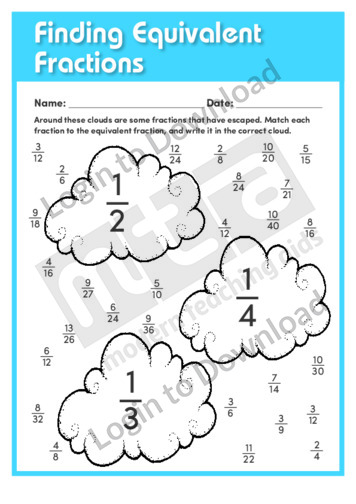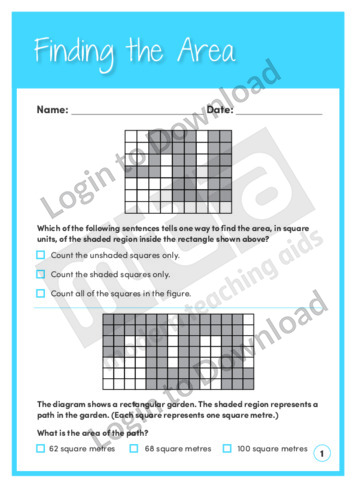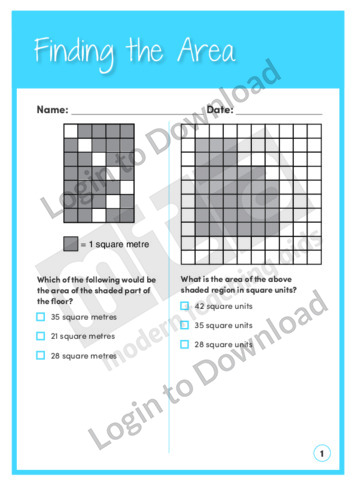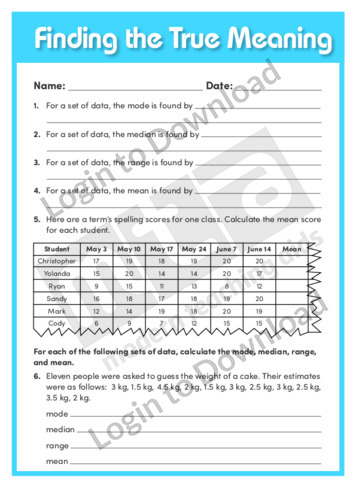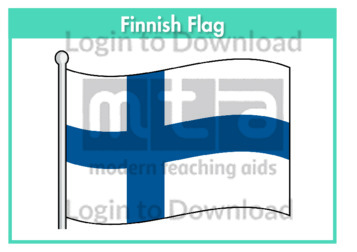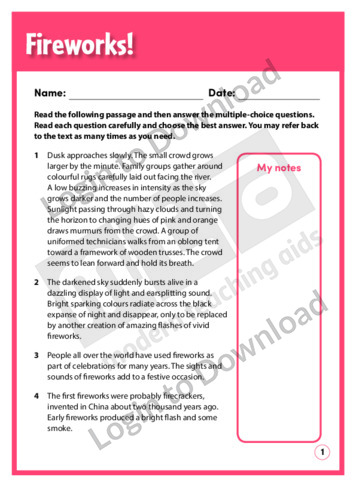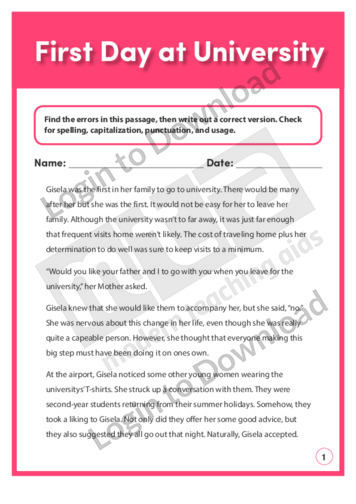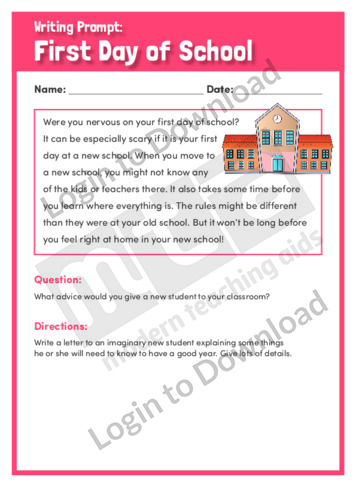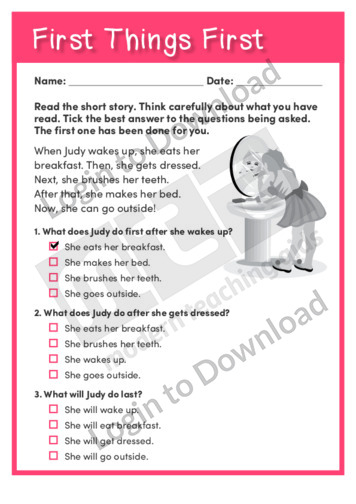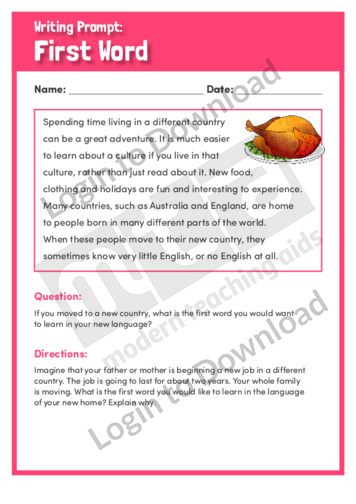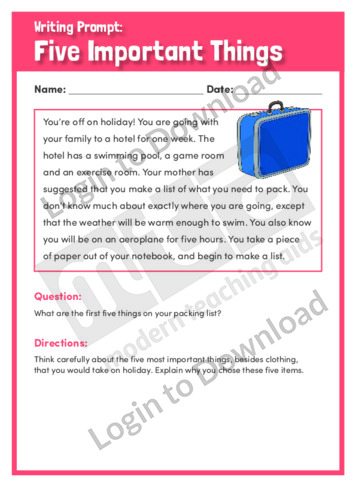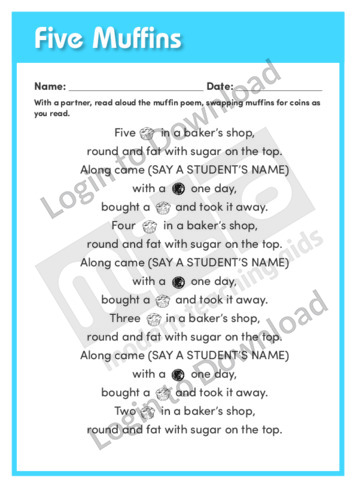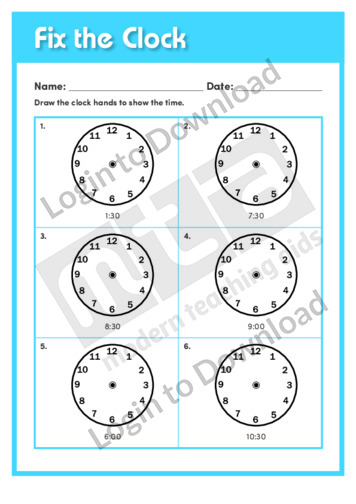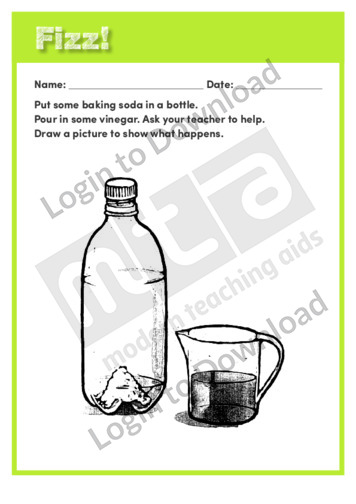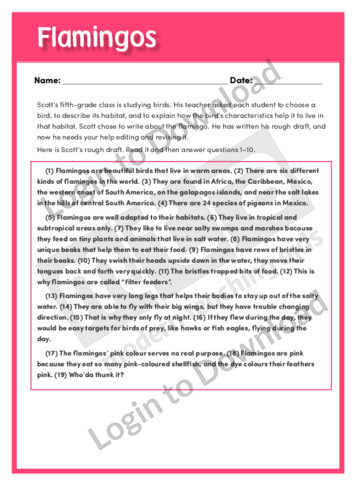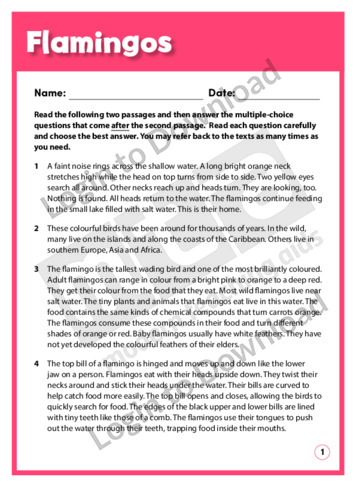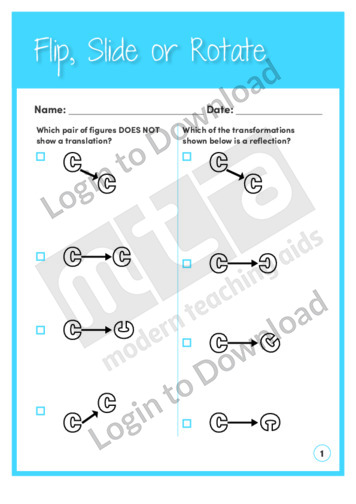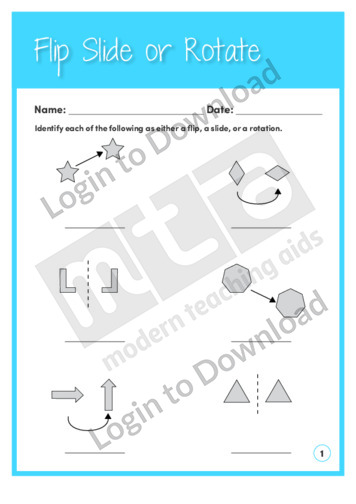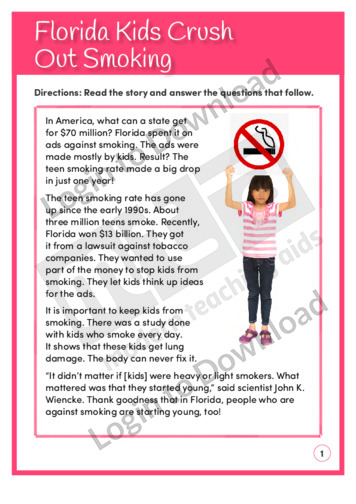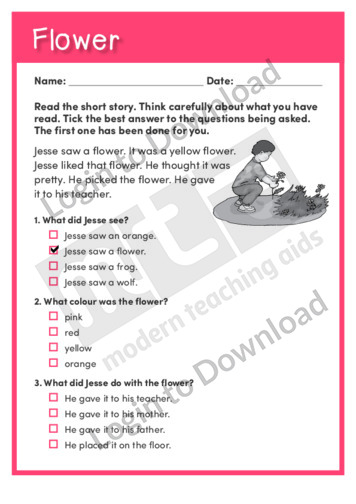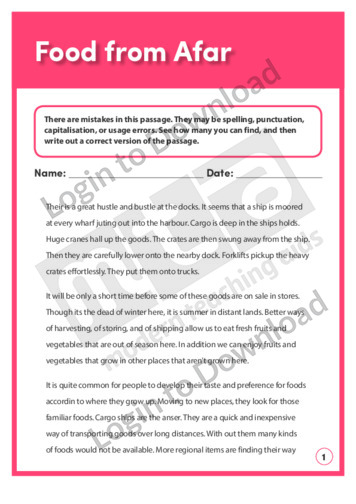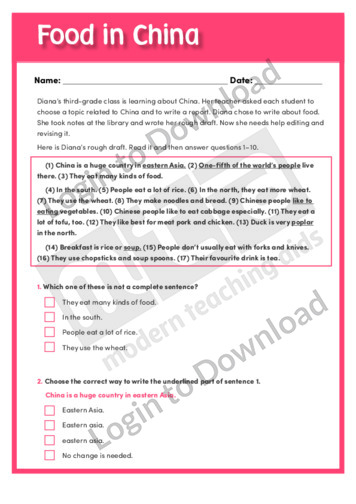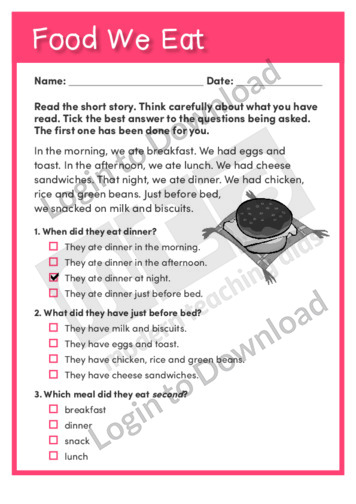This writing prompt, ‘Feeling Bugged’ helps students to write about the things that bug or bother them. It encourages students to think about how they react to things that annoy them and is aimed at broadening students’ writing and language skills.
This writing prompt, ‘Feeling Safe’ helps students to write about who or what makes them feel safe. It encourages students to think about their personal safety and is aimed at broadening students’ writing and language skills.
This writing prompt, ‘Feeling Scared’ helps students to write about things that make them scared. It encourages students to think about how the body reacts to fear and is aimed at broadening students’ writing and language skills.
This reading comprehension activity, ‘Fiction and Football’ asks students to answer comprehension questions about a story in which a boy discovers that writing fiction can be as fun as football. It is aimed at developing students’ awareness of semantics and encourages them to look critically at the language used in a narrative text in order …More
This worksheet, ‘FIFA World Cup Acrostic Poem’ is a fantastic quick activity to brainstorm facts and ideas about the FIFA World Cup. It is a fun resource that can be used without preparation across all age groups and abilities. Students are required to use the letters from the word ‘FIFA World Cup’ to list facts …More
This worksheet, ‘FIFA World Cup Crossword’ provides students with the opportunity to use skills including vocabulary, reasoning and spelling to find the correct soccer words to complete the puzzle. It encourages students to identify and understand the terms being used and to build on their vocabulary of key words used when discussing FIFA World Cup …More
This worksheet, ‘FIFA World Cup Figure Match-Up’ is a fun and engaging activity to explore interesting facts and figures about the FIFA World Cup. Students must match each fact to its corresponding figure by matching the letters. This resource encourages students to think logically and analytically to ascertain the most likely answer. An answer sheet …More
This worksheet, ‘FIFA World Cup Timeline’ provides a vertical timeline that explores interesting and key events throughout the history of the FIFA World Cup. The timeline spans the period from 1930, the year of the first FIFA World Cup, to 1998, when the field expanded to include 32 finalists. This resource demonstrates a sequence of …More
This worksheet, ‘FIFA World Cup True or False?’ is a thought-provoking worksheet that requires students to asses the truth of facts about FIFA World Cup concepts. Many students may presume the answers quickly only to realise their assumptions were not correct which can lead to interesting discussions and further research into soccer related topics. An …More
This worksheet, ‘FIFA World Cup Unscramble’ is a great activity that encourages students to study the sounds and spellings of words associated with the FIFA World Cup. Students will be challenged to unscramble letters to find common words used during this topic. An answer sheet is also provided.
This worksheet, ‘FIFA World Cup Word Search’ gives students the opportunity to learn new vocabulary and improve their spelling of words associated with the FIFA World Cup. Students must scrutinise the spelling of each word on their list, ensuring new vocabulary is committed to memory with the correct spelling.
This worksheet, ‘FIFA World Cup Word Shapes’ is a great resource that encourages students to examine the spelling and letter shapes of words associated with the FIFA World Cup. Students must use the word bank to match the letter shapes to the correct words.
This worksheet, ‘Figure Skating Profile’ provides a simple graphic for students to explore and organise key information relating to the Winter Olympic sport, figure skating. The resource asks students to explain what equipment is needed, the history of that sport, the nature of the sport in today’s Winter Olympics and past gold medal winners. It …More
This geometry worksheet, ‘Figures and Shapes’ allows for practice describing 3D shapes. Answer sheet provided with file download.
This figurative language worksheet ‘Figures of Speech and Similes’ explains how figures of speech improve writing and how to use similes. It is aimed at introducing students to the principles of imagery and has a practical section on similes to help students make their writing more interesting and engaging.
This units of measurement learning activity, ‘Fill It Up’ asks students to practise with estimating and ordering the capacity of different objects.
This shape worksheet, ‘Fill It Up’ asks students to practise calculating the volume of three-dimensional shapes.
This editing and revising learning activity, ‘Film Critic’ encourages students to recognise spelling errors, punctuation and sentence structure. Answer sheet provided with file download.
This data interpretation worksheet, ‘Find Me!’ asks students to practise with estimates and exact answers.
This number and operations worksheet, ‘Find the Missing Number’ allows for practice using equivalent operations. Answer sheet provided with file download.
This number and operations worksheet, ‘Find the Missing Numbers’ allows for practice solve missing number problems. Answer sheet provided with file download.
This patterns worksheet, ‘Find the Missing Numbers 1’ allows for practice finding the missing number in a number pattern. Answer sheet provided with file download.
This patterns worksheet, ‘Find the Missing Numbers 2’ allows for practice finding the missing number in a number pattern. Answer sheet provided with file download.
This beginning algebra worksheet, ‘Find the Pattern 1’ allows for practice with number patterns. Answer sheet provided with file download.
This beginning algebra worksheet, ‘Find the Pattern 1’ allows for practice finding number patterns. Answer sheet provided with file download.
This beginning algebra worksheet, ‘Find the Pattern 2’ allows for practice with number patterns. Answer sheet provided with file download.
This beginning algebra worksheet, ‘Find the Pattern 2’ allows for practice finding patterns. Answer sheet provided with file download.
This beginning algebra worksheet, ‘Find the Pattern 3’ allows for practice with number patterns. Answer sheet provided with file download.
This number and operations worksheet, ‘Find the Percentage’ allows for practice with percentages. Answer sheet provided with file download.
This number and operations worksheet, ‘Find the Solutions’ allows for practice with fractions and decimals. Answer sheet provided with file download.
This patterns and algebra worksheet, ‘Find the Value’ allows for practice finding the missing values in expressions. Answer sheet provided with file download.
This beginning algebra worksheet, ‘Find the Value 1’ allows for practice solving basic equations. Answer sheet provided with file download.
This beginning algebra worksheet, ‘Find the Value 2’ allows for practice solving basic equations. Answer sheet provided with file download.
This word study activity, ‘Find the Words’ asks students to circle the words in different sentences. It is aimed at developing students’ understanding that sentences are made up of individual words and that groups of words make meaning.
This writing prompt, ‘Finders Keepers’ helps students to write about what they would do if they found a wallet. It encourages students to think about being honest and is aimed at broadening students’ writing and language skills.
This fractions worksheet, ‘Finding Equivalent Fractions’ asks students to practise finding fractional equivalents.
This measurement worksheet, ‘Finding the Area 1’ allows for practice finding areas. Answer sheet provided with file download.
This measurement worksheet, ‘Finding the Area 2’ allows for practice finding the area and perimeter of shapes. Answer sheet provided with file download.
This data interpretation worksheet, ‘Finding the True Meaning’ asks students to practise finding the mode, median, range and mean of given sets of data.
This flag worksheet features the Finnish flag in full colour followed by a black and white version for students to colour in the appropriate colours.
The article, ‘Fireworks’ gives a brief history of fireworks then explains how they are made and how different effects are created. A poster advertises a fireworks show. It provides opportunities for students to practise vocabulary and comprehension skills. Answer sheet provided with file download.
This Editing Task worksheet, ‘First Day at University’, features a narrative text about a young woman’s experiences as she starts university. It encourages students to identify spelling, punctuation, capitalisation, and usage errors in the text and then to write out a correct version. The purpose of this task is to develop students’ accuracy in written …More
This writing prompt, ‘First Day of School’ helps students to write a letter to an imaginary student giving advice to them about their class. It encourages students to think about attending a new school and is aimed at broadening students’ writing and language skills.
This reading comprehension activity, ‘First Things First’ asks students to answer questions about a short story, which is about what a girl does after she wakes up and starts to get ready. It is aimed at developing students’ awareness of semantics and encourages them to recall details from the text.
This writing prompt, ‘First Word’ helps students to write about the first word they would want to learn if they moved to a new country and had to learn a new language. It encourages students to think about different languages and cultures and is aimed at broadening students’ writing and language skills.
This writing prompt, ‘Five Important Things’ helps students to write about the five most important things they would take on holiday. It encourages students to think about their belongings and is aimed at broadening students’ writing and language skills.
This subtraction learning activity, ‘Five Muffins’ asks students to practise with subtraction.
This time and date worksheet, ‘Fix the Clock’ asks students to practise drawing clock hands to show the time.
This Earth Science worksheet, ‘Fizz!’ asks students observe and record what happens when two chemicals are combined. It supports an understanding of changes in materials.
This editing and revising learning activity, ‘Flamingos’ encourages students to recognise capitalisation and spelling errors, punctuation and sentence structure. Answer sheet provided with file download.
The paired texts, ‘Flamingos’ and ‘Sunset Birds’ provide a factual and a poetic description of flamingos. They provide opportunities for students to practise vocabulary and comprehension skills. Answer sheet provided with file download.
This measurement worksheet, ‘Flip, Slide or Rotate 1’ allows for practice with transformations. Answer sheet provided with file download.
This measurement worksheet, ‘Flip, Slide or Rotate 2’ allows for practice with transformations. Answer sheet provided with file download.
This reading comprehension activity, ‘Florida Kids Crush Out Smoking’, asks students to answer comprehension questions on a text about teen smoking.
This reading comprehension activity, ‘Flower’ asks students to answer questions about a short story, which is about a boy who picked a flower for his teacher. It is aimed at developing students’ awareness of semantics and encourages them to recall details from the text.
This reading comprehension activity, ‘Food for Thought’, asks students to answer comprehension questions on a text about canteen food in schools.
This Editing Task worksheet, ‘Food from Afar’, features an informational text about cargo ships transporting food. It encourages students to identify spelling, capitalisation, punctuation, and usage errors in the text and then to write out a correct version. The purpose of this task is to develop students’ accuracy in written work.
This editing and revising learning activity, ‘Food in China’ encourages students to recognise capitalisation and spelling errors, correct tense, punctuation and sentence structure. Answer sheet provided with file download.
This reading comprehension activity, ‘Food We Eat’ asks students to answer questions about a short story, which is about mealtimes and food. It is aimed at developing students’ awareness of semantics and encourages them to recall details from the text.
It�s that easy!


